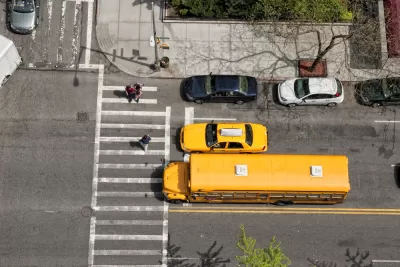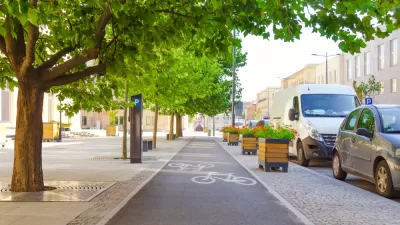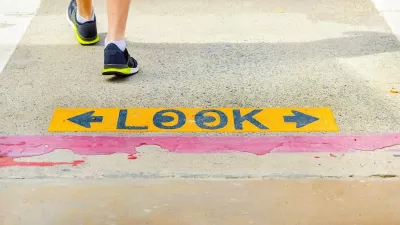Improving road safety starts with considering the safety of people outside cars early and often.

Writing for the Seattle Times, Anna Zivarts outlines some suggestions from the Mobility Safety Advisory Group for making roads safer, particularly for people not behind the wheel.
The group argues that making roads safer begins with thinking about the safety of all users, not just those in cars. “First, the surest way to ensure people aren’t killed by vehicles is to reduce speed,” Zivarts writes. This may sound inconvenient for people who want streets to move vehicles as quickly as possible, but is a guaranteed way to reduce traffic deaths. “We need to challenge the unspoken consensus that our infrastructure must guarantee vehicle traffic flow at specific speeds and come up with improved metrics that value access and safety.”
Second, reducing traffic violence means making other modes more convenient and safe to use, taking cars off the road and providing more mobility options. When people have access to good public transit and safe infrastructure for biking and walking, they often choose to leave the car at home. For transit-dependent workers who don’t own cars, improving transit and ‘Complete Streets’ infrastructure can provide crucial links to jobs and opportunities.
The third key piece, according to the MSAG, is changing patterns of land use and improving housing affordability. “Most critically, we need to tackle land use and housing affordability. It’s much easier to reduce car speeds, reduce vehicle miles traveled, and increase the percentage of trips made by walking, rolling, riding and transit if we stop building communities centered on automobility.”
FULL STORY: To increase pedestrian safety, prioritize the people not in cars

Alabama: Trump Terminates Settlements for Black Communities Harmed By Raw Sewage
Trump deemed the landmark civil rights agreement “illegal DEI and environmental justice policy.”

Study: Maui’s Plan to Convert Vacation Rentals to Long-Term Housing Could Cause Nearly $1 Billion Economic Loss
The plan would reduce visitor accommodation by 25% resulting in 1,900 jobs lost.

Planetizen Federal Action Tracker
A weekly monitor of how Trump’s orders and actions are impacting planners and planning in America.

Grand Rapids Mayor Proposes Garage Conversion Plan
The mayor says allowing homeowners to convert garages to dwelling units could alleviate the city’s housing shortage.

Baltimore Ordered to Improve Sidewalk Accessibility
The city is one of many to face lawsuits for failing to comply with the Americans with Disabilities Act.

This Toronto Suburb Has More Bus Riders Than Columbus, Ohio
Brampton, Ontario used gradual improvements in service to prove that if you build it, they will ride.
Urban Design for Planners 1: Software Tools
This six-course series explores essential urban design concepts using open source software and equips planners with the tools they need to participate fully in the urban design process.
Planning for Universal Design
Learn the tools for implementing Universal Design in planning regulations.
Smith Gee Studio
Alamo Area Metropolitan Planning Organization
City of Santa Clarita
Institute for Housing and Urban Development Studies (IHS)
City of Grandview
Harvard GSD Executive Education
Toledo-Lucas County Plan Commissions
Salt Lake City
NYU Wagner Graduate School of Public Service





























